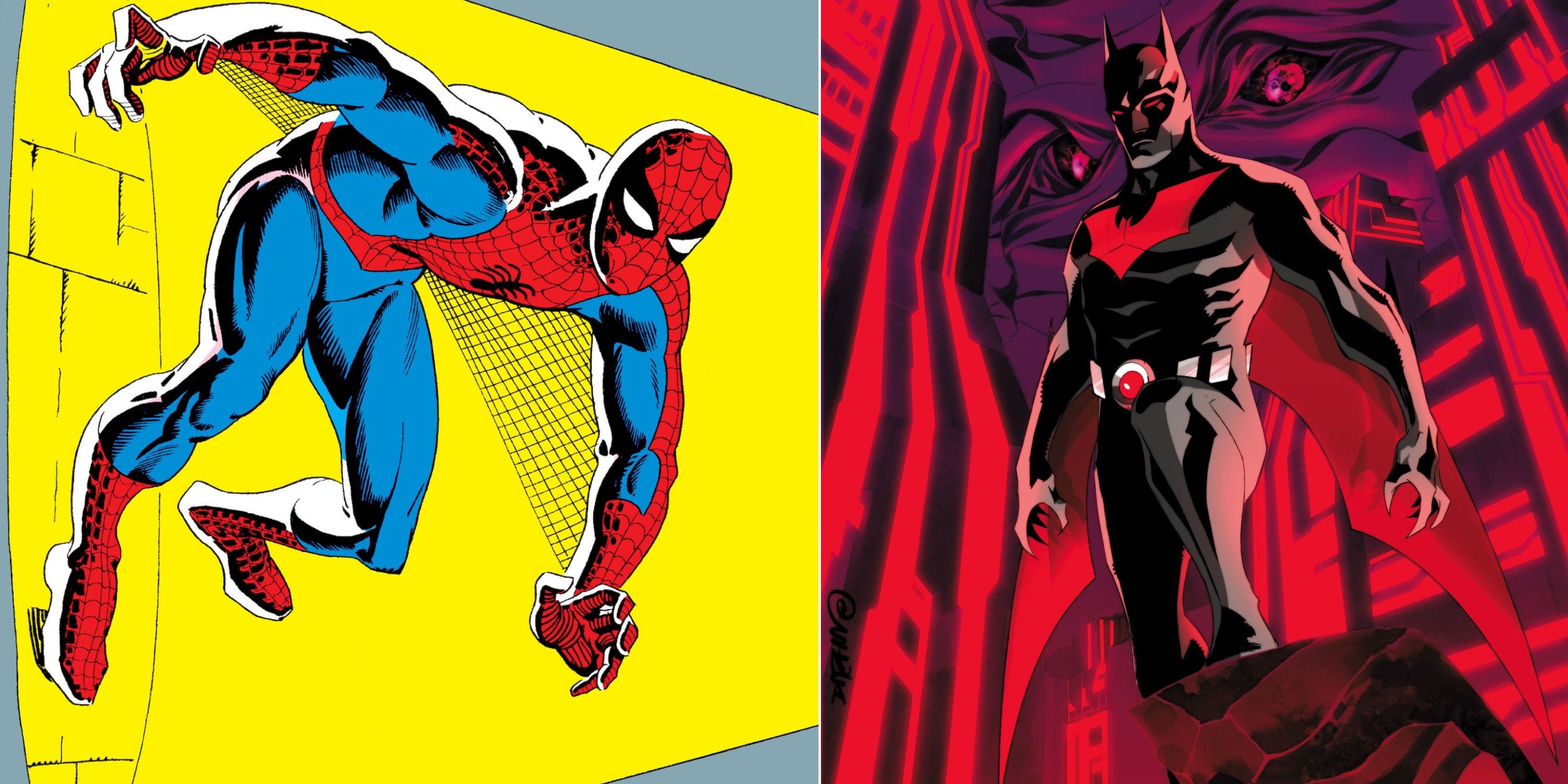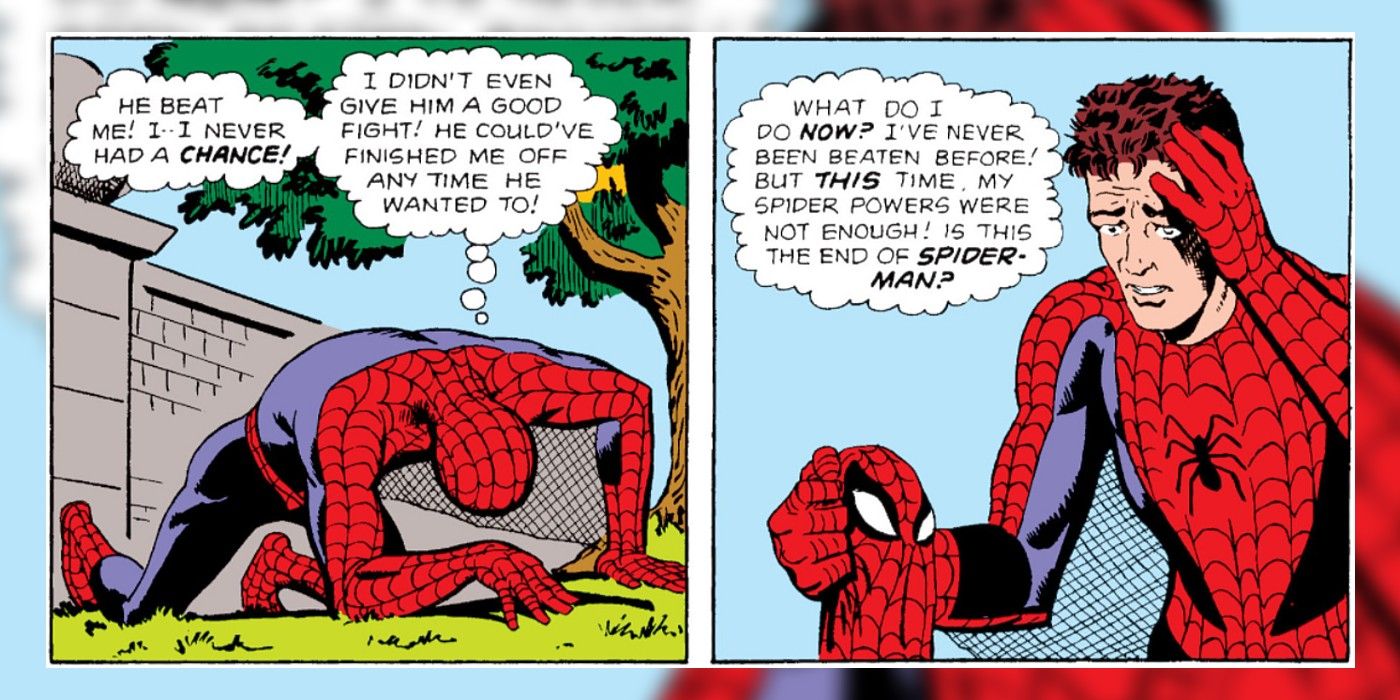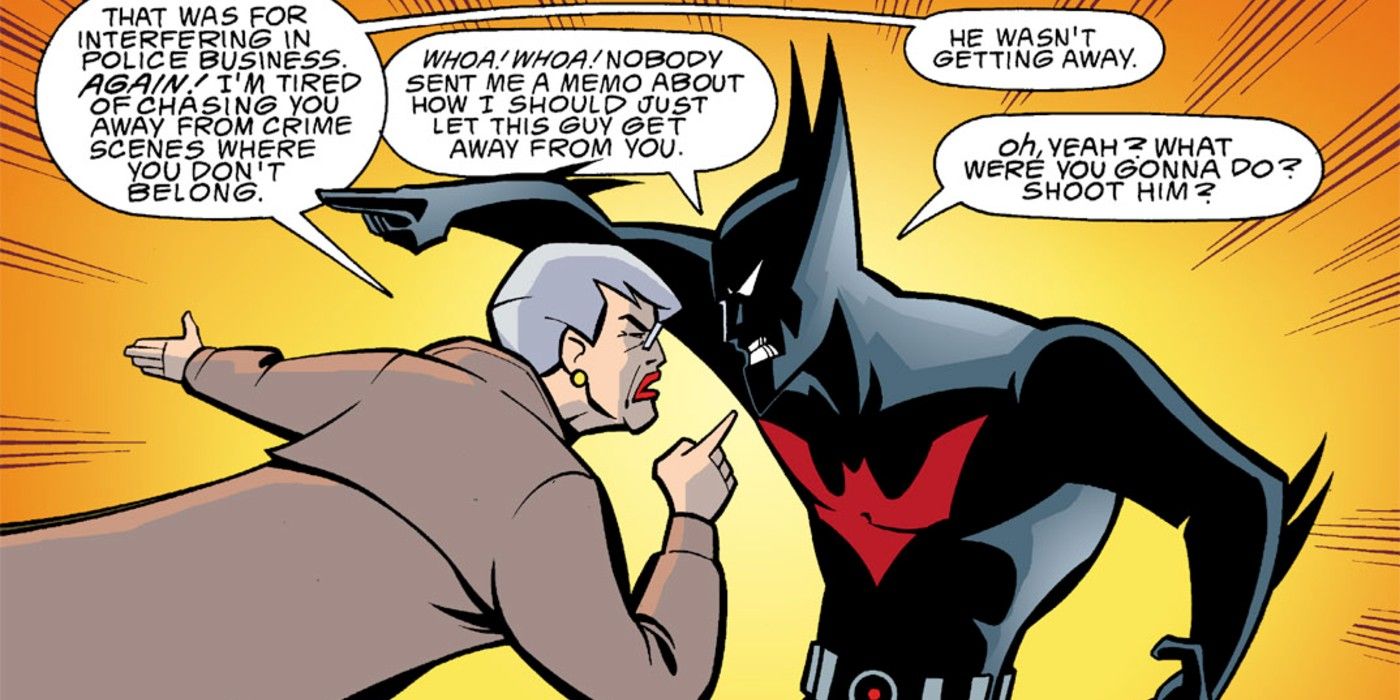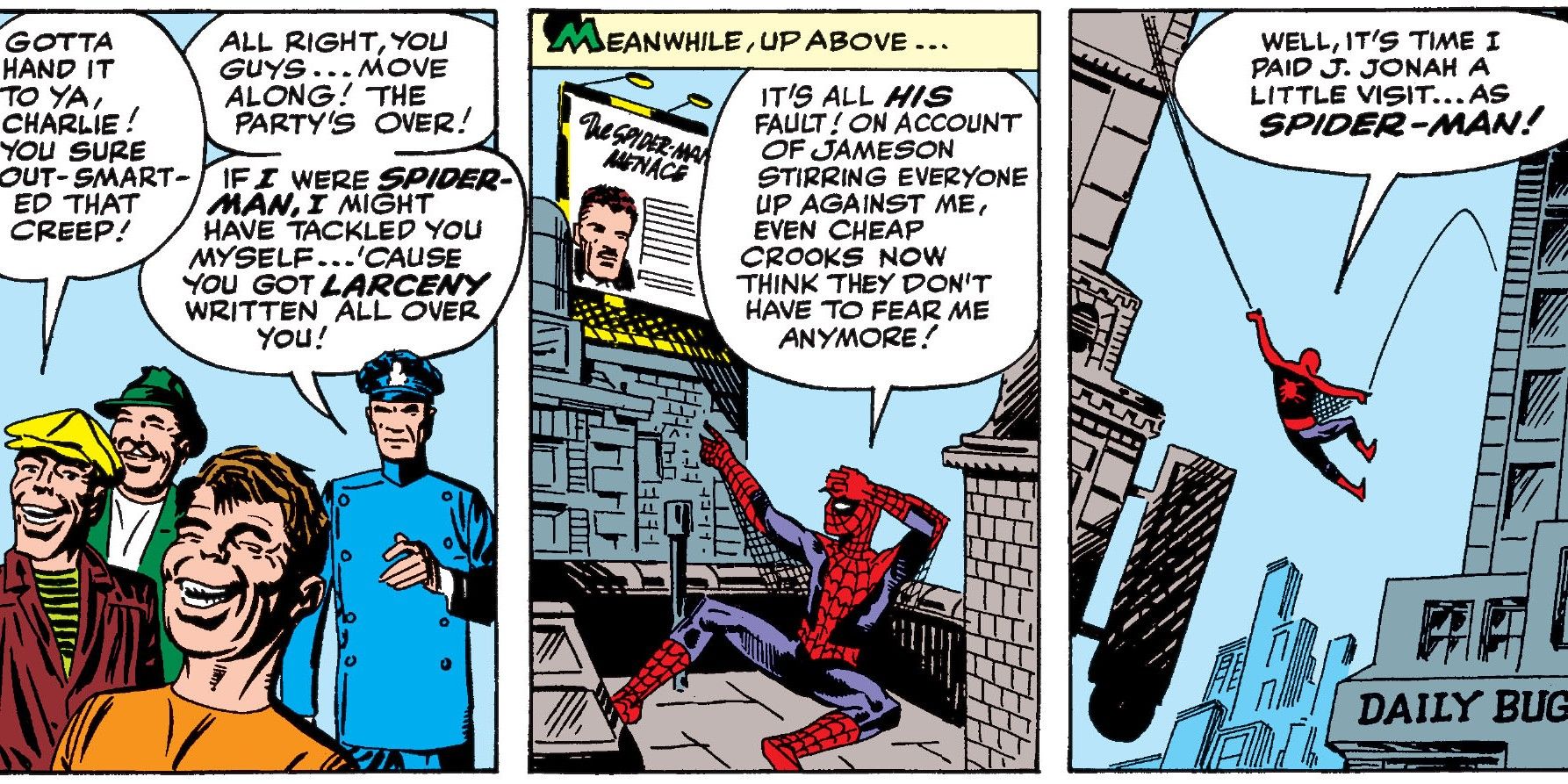Since his inception in the 1999 animated television series Batman Beyond, Terry McGinnis, the Batman of days to come, has been a fascinating take on the mythos of the character, in time coming into his own as a stand-alone feature in many titles across DC. A cool, concentrated young hero for an oncoming age of darkness, Terry's popularity is at least in part due to the similarities he shares with another famous costumed hero: Marvel's Spider-Man, aka Peter Parker.
Just as Stan Lee and Steve Ditko once borrowed the trope of a common criminal killing a parental figure as a dramatic origin story for the Wall-Crawler from the original Dark Knight himself, Batman Beyond creators Bruce Timm, Paul Dini and Alan Burnett were always clear that their futuristic take on the Caped Crusader (now capeless) borrowed more than a few elements from the early days of Lee and Ditko. These included most aspects of the character save for a few crucial details, the most prevalent being that Terry, unlike Peter, kept his whining to a minimum.
Teenage Heroes
As originally presented in 1962, The Amazing Spider-Man, Peter Parker, was a high school student who gained magnificent powers after being bitten by a radioactive spider, and began his own crusade against crime following the death of his Uncle Ben at the hands of a burglar he could've stopped. Like Spider-Man, Terry McGinnis' Batman was conceived as a high school student, the same age Peter was in the original run of the character, who through a series of random events in a dystopian future unearths the now elderly Bruce Wayne's secret as having been the famous hero of Gotham and steals a cybernetic Batsuit which amplifies his strength in a quest to avenge his father's murder. Following his success, Terry is taken in by Bruce to be a new Batman in a darker, more brutal future.
Timm and company were rather overt regarding their inspiration from Lee/Ditko in the early days of Batman Beyond, including homages to the cover of Amazing Fantasy #15 (Spidey's first appearance) in season 1, episode 4 "Golem", as well as a full-blown satire on Silver Age Marvel with characters "The Terrific Trio", a reference to Spidey's initial meeting with The Fantastic Four in Amazing Spider-Man #1 (which included Terry lifting a mass of metal machinery off of himself in reference to the famous opening of Amazing Spider-Man #33).
Likewise, much of the drama centered around Terry's high school friends, mandated by Warner Bros. executives to appeal to young fans; another similarity to Peter's early adventures which focused on his perennial status as an outsider at his local high school. This was because Spider-Man was initially made in the same vein as the then-mainstream romance comics that Lee had previously worked on, with the added Batman/Dick Tracy rogues' gallery to add adversity.
Stoic vs. Neurotic
However, here is where the characters begin to diverge. Terry, unlike Peter, was written as a streetwise former criminal, quite unlike the bashful, somewhat neurotic young Spider-Man. Where Terry would often dive headfirst into danger, sometimes receiving a savage beating much like the early Spider-Man stories, his character was one who seldom took time to ruminate on his mistakes, preferring instead to fight to his last. Early Spider-Man stories, on the other hand, would often feature a despairing Parker who, following every failure, would run away and bitterly complain to the open air about his mostly self-inflicted misfortunes, his poor social standing at school or his lack of intelligent decision-making in battle.
Lee was making an effort to separate his heroes from rival publisher DC's flawless, Golden Age stable, and so Peter was often presented as an intelligent yet ultimately immature young man who often dove into situations without thinking and found himself suffering the consequences, be it in inadvertently bringing misery upon his one-time love Betty Brant, or earning the ire of Daily Bugle boss J. Jonah Jameson. While over time Peter would gain the confidence he needed to make better choices in his civilian identity, his early years are rife with examples of his childishness getting the better of him.
Terry on the other hand - perhaps because of the guiding hand of Bruce Wayne but more likely because of his strength of character - channels his aggression in more useful, assertive ways. As Terry, he defends his classmates against bullies unapologetically, even protecting the bullies from supervillains as Batman, while Peter fantasizes about hurting his schoolyard rivals. Out of costume, Terry even physically confronts his arch-nemesis Derek Powers when taunted, something Peter would never do for fear of hurting someone or exposing his identity.
In super-battles, Terry's glib rejoinders often feel more in line with simply expressing disdain for evil than Spider-Man's eclectic wisecracks. Peter personally resents his early rogues and profits off their battles through selling photos (some faked) of their forays, mostly out of his need to support Aunt May, while Terry has the restraint to not go after Powers despite his personal animosity in the interest of building a strong case (which ultimately pays off).
A More Mature Hero
A great instance of Terry's personal unflappable courage comes in Batman Beyond vol. 2 #13, where Barbara Gordon, the former Batgirl and now commissioner of the Gotham Police, requests his aid due to a lingering infliction of the Scarecrow's fear toxin from her earlier days which resurfaces now and again. Terry goes to Bruce and tells him straightly that he will be incommunicado for a few days, which Bruce accepts without argument. Despite being met with threats of arrest and accusations of inadequacy by Barbara, Terry manages to keep his insecurities at bay and solve a kidnapping case while managing to protect Barbara during her fear episode.
Compare this to Spider-Man who, in The Amazing Spider-Man #4 runs away from a group of criminals after they falsely accuse him of assault and takes his impotent rage out on J. Jonah Jameson, his future boss, by webbing his chair so he gets stuck. Spider-Man's vendetta against Jameson spans almost the entire run of Spider-Man, eventually pushing Jameson to invest in creating his own supervillain, the Scorpion, and building a robot to capture Spider-Man. This was a conflict the young Spidey escalated often by dropping by the Bugle and "pranking" Jameson - not undeservedly, but in a childish expression of aggression which 2020's The Amazing Spider-Man #40 acknowledged was both unethical for a hero and only helped to intensify their feud.
--
In his own way, Terry McGinnis' portrayal in Batman Beyond represents an evolution not only of Batman, but Spider-Man, and explicitly highlights the similarities and differences between these two iconic superheroes. In doing so, the character also highlights what is Spider-Man's most endearing, yet also most indefensible character flaw: as Stan Lee conceived of him, Spidey was a guy with a lot of personal issues, and boy did readers hear about them.




